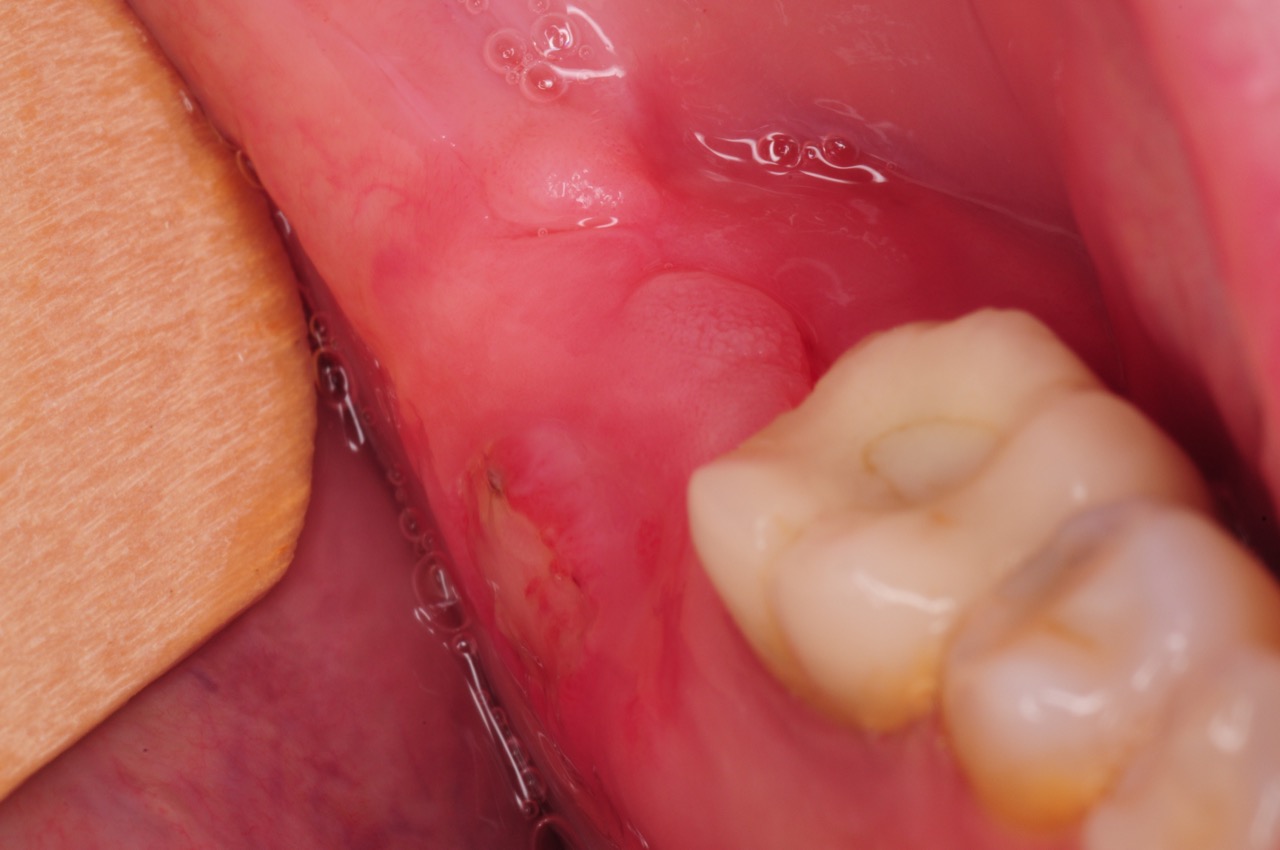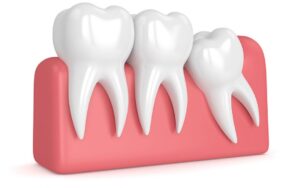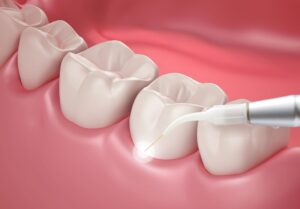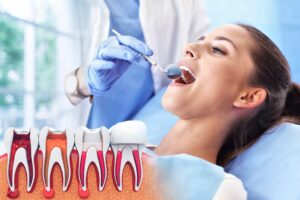Wisdom Tooth Removal

Wisdom tooth removal is a common dental procedure that many individuals undergo, typically in their late teens or early twenties. These third molars, often referred to as wisdom teeth, are the last set of teeth to emerge in the mouth.
While some people may never experience issues with their wisdom teeth, for others, these teeth can cause a range of complications, including overcrowding, misalignment, pain, and infection.
In this comprehensive guide, we will delve into the reasons behind wisdom tooth removal, the signs that indicate surgery might be necessary, and what you can expect before, during, and after the procedure.
We’ll also explore the potential risks and complications associated with wisdom tooth extraction and provide expert advice on recovery and aftercare.
Table of Contents
What is wisdom teeth removal?
Wisdom teeth removal is a surgical procedure to extract one or more wisdom teeth — the four permanent adult teeth located at the back corners of your mouth on the top and bottom. These teeth, also known as third molars, typically emerge in individuals between the ages of 17 and 25. Not everyone develops wisdom teeth, but for those who do, these teeth can sometimes cause dental problems.
The procedure can vary from a simple extraction to a more complex surgical procedure, depending on whether the wisdom teeth are impacted or fully visible. It is typically performed under local anesthesia, sedation, or general anesthesia, depending on the complexity of the extraction and the patient’s comfort level.
When is wisdom teeth removal needed
- Impaction: Wisdom teeth are often removed because they do not have enough room to emerge or grow normally. They may become trapped (impacted) within your jaw, which can lead to pain or infection.
- Crowding: They may push against other teeth, causing misalignment or crowding of existing teeth, which can disrupt the alignment of your bite or orthodontic work.
- Infection or Gum Disease: Partially emerged wisdom teeth can create openings around the teeth that allow bacteria to grow, leading to infection, pain, swelling, jaw stiffness, and general illness.
- Cysts: Cysts or tumors can form around impacted wisdom teeth, potentially damaging the jawbone and neighboring teeth if not addressed.
What does it mean for a tooth to be impacted?
A tooth is considered impacted when it is blocked from erupting into the mouth fully or properly.
This can occur for several reasons, including lack of space in the jaw, overcrowding of teeth, or abnormal tooth development. Impaction is most commonly associated with wisdom teeth (third molars), which are the last set of teeth to develop and emerge, typically in late adolescence or early adulthood. However, other teeth, such as canines, can also become impacted.
There are different types of tooth impaction, categorized based on the angle and position of the tooth:
- Mesial Impaction: The most common type of wisdom tooth impaction, where the tooth is angled forward, towards the front of the mouth.
- Vertical Impaction: The tooth is positioned correctly but cannot erupt through the gum line because it is blocked by the tooth in front of it.
- Horizontal Impaction: The tooth is lying on its side and is positioned horizontally rather than vertically, making it impossible to erupt normally.
- Distal Impaction: Less common, where the tooth is angled backward, towards the rear of the mouth.
Impacted teeth may cause various problems, including pain, infection, damage to adjacent teeth, and the development of cysts or tumors.
Because impacted teeth are trapped beneath the gum line, partially erupted, or incorrectly positioned, they are difficult to clean and more susceptible to tooth decay and gum disease.
The treatment for an impacted tooth often involves surgical extraction, especially if the tooth is causing pain, infection, or other dental issues. In some cases, particularly with impacted canines, orthodontic treatment may be used to help guide the tooth into its correct position in the mouth.
Problems with impacted wisdom teeth
Impacted wisdom teeth, which are teeth that do not have enough room to emerge or grow properly, can lead to several problems if not addressed. These issues can affect not only your oral health but also your overall well-being.
Here are some of the common problems associated with impacted wisdom teeth:
- Pain and Discomfort: One of the most immediate effects of impacted wisdom teeth is pain and discomfort. This can occur at the site of the impacted tooth or radiate towards the ears, jaw, and surrounding teeth.
- Infection: Partially erupted wisdom teeth can create openings around the tooth that allow bacteria to enter, leading to infection. This condition, known as pericoronitis, can cause severe pain, swelling, redness, and difficulty opening the mouth.
- Damage to Adjacent Teeth: Impacted wisdom teeth can push against neighboring teeth, causing damage or leading to crowding and misalignment. This can compromise the health of adjacent teeth and may require orthodontic treatment to correct.
- Cysts and Tumors: The sac surrounding an impacted wisdom tooth can fill with fluid, forming a cyst that can damage the jawbone, teeth, and nerves. In rare cases, a tumor (usually benign) can develop, which may require a more extensive surgical procedure to remove.
- Gum Disease: Impacted wisdom teeth are hard to clean, making them a breeding ground for bacteria. This can lead to gum disease (periodontal disease), characterized by swelling, bleeding, and soreness of the gums, and can affect overall oral health.
- Tooth Decay: Partially impacted wisdom teeth are at a higher risk of tooth decay than other teeth due to their hard-to-reach location, making them difficult to clean. Decay can lead to cavities, infection, and the need for further dental work.
- Jaw Problems: The pressure from growing and impacted wisdom teeth can also lead to jaw problems, including temporomandibular joint disorders (TMJ or TMD), causing pain in the jaw joint and movements.
Due to these potential problems, dentists often recommend the removal of impacted wisdom teeth, even if they are not currently causing issues.
How wisdom teeth are removed
The removal of wisdom teeth, also known as third molars, is a common dental procedure that varies in complexity depending on whether the teeth are impacted and the degree of their development.
Consultation and Planning
- Initial Examination: The process begins with a dental examination, where the dentist or oral surgeon evaluates the position of the wisdom teeth using X-rays or dental CT scans. This helps in planning the extraction procedure by assessing the teeth’s size, shape, and angle, as well as their relationship to surrounding structures.
- Discussion of Anesthesia Options: The dentist or surgeon will discuss anesthesia options with the patient. These may include local anesthesia, sedation (oral or intravenous), or general anesthesia, depending on the complexity of the extraction and the patient’s comfort level.
The Extraction Procedure
- Anesthesia: The chosen form of anesthesia is administered to ensure the patient is comfortable and pain-free during the procedure.
- Incision: If the wisdom tooth is impacted, the oral surgeon makes an incision in the gum tissue to expose the tooth and bone.
- Bone Removal: Any bone blocking access to the tooth root may need to be removed.
- Tooth Sectioning: In some cases, the tooth may be divided into sections to make it easier to remove. This is particularly useful if the tooth is firmly anchored in its socket or if the roots are curved.
- Tooth Removal: The tooth (or pieces of the tooth) is then carefully removed. The goal is to minimize the amount of bone that needs to be removed along with the tooth.
- Cleaning the Site: After the tooth is extracted, the site is cleaned of any debris from the tooth or bone.
- Stitching: The wound is usually stitched up to promote healing, with stitches that typically dissolve over time.
- Gauze Placement: Finally, gauze is placed over the extraction site to help control bleeding and to aid in the formation of a blood clot.
Post-Procedure Care
- Recovery Instructions: Patients receive instructions on how to care for the extraction site, including how to manage swelling and pain, dietary recommendations, and oral hygiene practices.
- Medications: Pain relief medication and sometimes antibiotics are prescribed to prevent infection.
- Follow-Up: A follow-up appointment may be scheduled to monitor healing and remove stitches if they are not self-dissolving.
The entire process for removing a wisdom tooth can vary in duration, typically ranging from a few minutes to 20 minutes or more per tooth, depending on the complexity.
Recovery time varies among individuals but generally involves a few days of reduced activity and adherence to specific care instructions to ensure proper healing.
Possible complications for wisdom tooth removal
While wisdom tooth removal is a common and generally safe procedure, like any surgery, it can have potential complications.
Here are some possible complications associated with wisdom tooth extraction:
- Dry Socket (Alveolar Osteitis): This painful condition occurs when the blood clot at the site of the tooth extraction fails to develop, or it dislodges or dissolves before the wound has healed. Without the clot, the underlying bone and nerves are exposed to air, food, fluid, and bacteria. Dry socket typically manifests a few days after the extraction and requires treatment from a dentist or oral surgeon.
- Infection: The extraction site can become infected due to bacteria or trapped food particles. Symptoms may include fever, pus, swelling, and increased pain. Proper oral hygiene and sometimes antibiotics can manage and prevent infections.
- Bleeding: Some bleeding is normal after tooth extraction, but it usually subsides within a few hours. Excessive or prolonged bleeding may require medical attention to manage.
- Nerve Damage: Although rare, surgery can sometimes cause temporary or permanent nerve damage, leading to numbness, tingling, or loss of sensation in the tongue, lips, chin, gums, and teeth.
- Damage to Adjacent Teeth: The teeth near the extraction site can be damaged during the procedure, especially if the wisdom tooth is impacted and close to neighboring teeth. Fillings or crowns may be dislodged or damaged.
- Sinus Communication: Upper wisdom teeth are located near the sinuses, and their removal can sometimes lead to an opening between the mouth and the sinus cavity. This condition, known as an oroantral fistula, may require additional surgery to correct.
- Jaw Problems: Stiffness and soreness in the jaw are common after wisdom tooth extraction due to having the mouth open for an extended period. In rare cases, there can be more serious jaw issues, such as a fractured jaw or temporomandibular joint (TMJ) disorders.
- Incomplete Extraction: In some cases, small fragments of the tooth’s roots may be left behind to avoid nerve damage. These fragments can sometimes cause problems later on.
- Cysts or Tumors: Very rarely, a cyst or tumor may develop in the area where the wisdom tooth was removed, necessitating further treatment.
To minimize the risk of complications, follow the aftercare instructions provided by your dentist or oral surgeon closely.
This includes practicing good oral hygiene, avoiding smoking, and adhering to dietary recommendations. Thinking about how to smoke after tooth extraction without getting dry socket? Don’t. Try to stay away from this, to fully recover.
If you experience unusual symptoms after your surgery, such as excessive bleeding, severe pain, or signs of infection, contact your dental professional immediately.
FAQ on Wisdom Tooth Removal
How long will it take to recover from wisdom teeth removal?
Recovery from wisdom teeth removal typically takes a few days to a week. Most people can resume normal activities within a week, though complete healing of the gums may take 3 to 4 weeks. For bone to fully heal and fill in where the teeth were extracted, it may take several months. Pain and swelling usually improve within 2 to 3 days, but it’s important to follow your dentist’s aftercare instructions to ensure a smooth recovery.
How painful is wisdom teeth removal?
Wisdom teeth removal pain varies by individual but is generally manageable with anesthesia during the procedure and pain medication afterwards. Most discomfort occurs in the days following surgery, with peak pain typically within the first 24 to 48 hours. Pain severity depends on the complexity of the extraction and individual pain tolerance. Following post-operative care instructions can significantly reduce discomfort and aid in a smoother recovery process.
Are you awake during wisdom teeth removal?
Whether you’re awake during wisdom teeth removal depends on the type of anesthesia used. Options include local anesthesia (awake but numb), sedation anesthesia (conscious but relaxed, with little memory of the procedure), and general anesthesia (completely asleep). The choice depends on the complexity of the extraction and patient preference.
What happens if wisdom tooth is removed?
If a wisdom tooth is removed, it prevents potential problems like pain, infection, crowding, and damage to adjacent teeth. The extraction site initially heals over a few weeks, with complete bone healing taking a few months.
What’s the worst day of pain after wisdom tooth extraction?
The worst day of pain after wisdom tooth extraction typically occurs on the second or third day post-surgery. Pain and swelling peak during this time as the body’s healing response intensifies.
How long after wisdom teeth removal can I eat?
You can eat soft foods within a few hours after wisdom teeth removal, avoiding hot foods and beverages initially. Gradually reintroduce solid foods as comfort and healing allow, typically over the next few days to a week.
Fact Checked
Our dedicated team rigorously evaluates every article and guide to ensure the information is factual, up-to-date, and free of bias.
Updated Regularly
We update our articles and reviews regularly to ensure you have access to the latest data in the dental industry.
The content on Dental3DU’s blog is intended for educational purposes only. This information should not be relied upon as professional medical counsel. Be sure to always consult with your dentist about the dangers and benefits of any medication, treatment or procedure.







